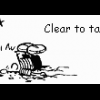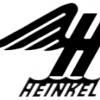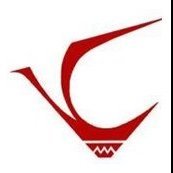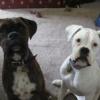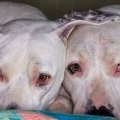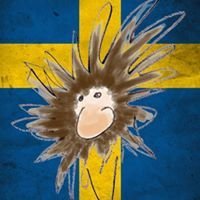Search the Community
Showing results for tags 'dornier'.
-
Link here to hyperscale.com forum. It seems a second Do335 has been found. I didn't even know about the first one. http://www.network54.com/Forum/149674/message/1476415554/Intact+Do335s+found
-
Mars Models is to release a 1/72nd Dornier Do.23F/G (2 in 1) kit - ref. 72003 Source: http://www.greenmats.club/topic/2372-172-do-23fg/ CADs V.P. Thanks Tali 😉
- 43 replies
-
- 4
-

-
- Dornier
- Mars Models
-
(and 1 more)
Tagged with:
-
Special Hobby is to release a 1/72nd Dornier Do.27 kit - ref.SH72327 Source: https://www.facebook.com/specialhobby/photos/a.458974014197468.1073741825.256992114395660/985391688222362/?type=3&theater Maybe next time in quarter scale... V.P.
- 66 replies
-
- 1
-

-
IsraDecal Studio / IsraCast is to release in 2016 a 1/48 Dornier Do.27 kit - ref. IC48041 The kit was supposed to be released late 2015... Source: https://www.facebook.com/isradecal/posts/716511551826811 V.P.
- 12 replies
-
- 3
-

-
- IsraDecal Studio
- Dornier
-
(and 1 more)
Tagged with:
-
Dornier Do 215 B-5 1:48 Revell The Do 215B-5 Kauz III followed the lead of the Do 17Z-10 "Kauz II", with a streamlined solid nose that housed 4 x 7.9mm MG17 machine guns and a single 20mm MG FF cannon (some sources state two cannons). An infra-red sensor was also fitted, part of the Spanner-Anlage system that was intended to pick up the hot exhausts of enemy bombers, with a small Q-Rohr display screen installed in the cockpit. In practice, the device proved to be of very limited value, as it was very unreliable and could not differentiate between friend and foe. The Do 215B-5 entered service with 4./NJG 1 in early 1941, with around 20 aircraft eventually being modified to carried the FuG 202 Lichtenstein B/C radar system. While the clumsy aerial array knocked around 15 mph off the aircraft's top speed, the first "kill" was claimed in August 1941, with additional victories soon following. The Do 215B-5 soldiered on in limited numbers until 1944, with its original armament augmented by an additional pair of cannon mounted side-by-side in a pack under the nose. The Kit The kit is a Revell boxing using the plastic of ICM. The box is somewhat large for the contents. On opening, all the standard sprues are contained in a single poly bag with only the clear parts separately packed in their own bag. The five sprues of medium grey styrene are very nicely moulded, with no sign of flash and only a few moulding pips. Whilst the details such as the panel lines are very finely done there are quite a few flow marks in the plastic, although these should disappear under a coat of primer. The clear parts though are blemish free and remarkably clear which is a good job as there is quite a bit of detail within the cockpit area, in fact the whole kit is well stocked with detail. Construction begins with the fitting of the lower side console in the port fuselage part, followed by the throttle box, a panel full of levers and the radio panel. The two part instrument panel is then fitted, decals being provided for the instruments, along with a large trim wheel attached to a tripod structure. The pilots seating section is made up of the floor, two rudder pedals, each made up of two parts, the control column with separate yoke and the floor support frame. The assembly is completed with the fitting of the seat and compass housing, before the whole assembly is fitted to the fuselage side. The lower rear longeron structure is then fitted, as is the rear side window. In the starboard fuselage more switch panels, a map case, and auxiliary instrument panels are attached, along with the front and rear lower longeron structures. The three piece co-pilots seat is then assembled and glued into position. There are three bulkheads to be fitted to one of the fuselage sides and the tail wheel before the fuselage can be closed up. The rear gunners seat is then assembled and attached to the two support frames in the fuselage. A fourth bulkhead is slid into position just aft of the rear cockpit bulkhead, whilst the panels underside of the cockpit are also attached, the clear section having an optional cut out panel replaced with one that doesnt have a machine gun opening, probably a legacy part from the previous bomber version. The large fuselage mounted fuel tank is then assembled and slid between the front two bulkheads. Moving onto the wings; the two lower sections are fitted with two part radiators and fairings, before being glued to the single piece upper wing, followed by the separate ailerons and landing lamp cover. The wing assembly is then attached to the fuselage and the aircraft begins to really take shape. The kit comes with complete with two complete engines, which whilst not the most detailed, certainly give the modeller a good starting point for some super detailing. Each engine is made up of a five piece block, separate rocker covers, inlet manifold and a three piece turbocharger. The engines are then fitted with the two engine bearers and put to one side whilst the nacelles are constructed. Each nacelle comes in two halves and are fitted out with the engine mounting bulkhead, radiator, radiator inlet and outlet doors, main gear bay rear bulkhead, exhaust stubs, gear retraction jacks and linkages plus the upper and lower cowlings, which can be left loose once the engines have ben attached to their respective bulkheads. Each main landing gear is made up of two part wheels/tyres, the two oleos, complete with cross braces are provided as a single part and fitted with the mudguard and its associated mounting beam. The completed units are then slid in to the front of the gear bays and connected to the retraction actuators. The completed nacelles are then attached to the wings and fitted with the two part propellers. Meanwhile the bomb racks are fitted into the still open bomb-bay and the rear machine gun for the cockpit is assembled from the gun, ammunition drums and spent cartridge bag. The machine gun is then fitted to the rear of the canopy, whilst on top, the aerial, DF dome and armoured wind shield, which has an option of being enclosed, or with an opening for an external telescopic? gunsight are attached. The canopy can then be fitted to the airframe along with the underside rear cupola glazing. The solid nose cone is fitted out with the machine gun and cannon barrels, as well as the extreme nose panel. On the underside the bomb-bay doors can be posed open or closed and just aft of the bomb-bay the HF aerial rail is attached. The horizontal and vertical tailplanes are each made up of two halves to which the single piece rudders and elevators are attached along with the elevator control arms. The vertical tailplanes/rudders are then attached to the horizontal tailplanes and each assembly attached to the rear fuselage. To complete the build the aerials for the Fug 202 radar are carefully assembled from four aerial masts to which four dipoles are attached to each and fitted to the nose cone. Although injection moulded the aerials are quite slender, but for those who wish to have some that are more to scale Owl models do an etched set that can be used instead. Decals The decal sheet in this kit like many other new ones is made in Portugal. The decals are quite matt. The printing is off a little with the smaller stencils not being able to be read, which they should be in this scale. Some of the other smaller decals are very indistinct. The sheet offers two options; Stab II. NJG2, Leeuwarden 1942 (Green/Grey camo as per box art) NJG2, Giltze-Rijen 1941 (Overall black) As this is a Revell Kit no swastikas are provided. Conclusion It would seem with this re-boxing that the sprues have been slightly tweaked and the correct style shrouded exhaust covers and ventral gondola are now in the kit which makes a big difference. Recommended. Revell model kits are available from all good toy and model retailers. For further information visit
-
Hi ,the Dornier bomber under restoration is on view to the public next week ,tickets cost£5 .
-
Thought I might challenge myself for my post-Wellesley build and pulled out the Matchbox Dornier 28D. Original 1984 boxing The kit iself is fairly simple so to add a bit of 'OMG why did I start this?' I thought why go for the standard Luftwaffe scheme when there's an allover white option that I can go nuts on.. SE-EDT, Swedish Red Cross, Biafra/Nigeria 1969 But...cabin internals...? Any ideas of the layout? If I can't find anything on the original (all external shots so far) I was thinking something like: The door is to the rear of the side facing seat (where the lip is), and I'll add a rack for the equipment as a rear bulkhead. Plausible? ...or madness...
-
So I have two questions: 1. What was colour of register markings? Black or red? 2. Colour of lower part of hull? Black or red? TIA Vesa
-
I've tried to make pictures in a descriptive way. Thus, very little text. In case of questions, just let me know! For future builders of this kit, here’s a list of improvement- and awareness points regarding the Airfix- and Eduard-parts. Safe a few exceptions, this advice merely regards the Airfix Dornier 17z + aftermarket specifically. The mentioned numbers are the paragraphs in this topic where the issues are discussed. Everything is treated chronologically, in the order of my findings. Please note that every modeller is in charge of his or her own build; everything is possible, nothing is obligatory... the hereunder is solely meant as help for those modellers who want to build this magnificently moulded Airfix-set. #0: plan well ahead. Personally I don't follow the instructions' order. Biggest deviations except those discussed hereunder: picture 32 -> exhaust will be fixed only after airbrushing and decalling the plane. Pictures 34-37: the engine will only be fixed after airbrushing & decalling. Picture 38: first, sand thin and prepare for priming. Eventually, the engine will be pushed inside those and the subassembly will be fixed to the wing. It's absolutely necessary though to fix the engines. Pictures 69-74: the glass and the MG15s are fixed before airbrushing the body. #2: the ribs of the upper flaps are best broken off and then glued in place. #4: mind that the upper flap is fitted perfectly, it's a very tight fit. Take great attention when using CA, something I really don't advice. #19: remove inexplicably moulded plastic from the MG15s. #23: put photo etch on, and paint, all MG15-cartridges. In Airfix' instructions, no less than 21 are forgotten... same with Eduard, most cartridges are forgotten. #25: mind a possibly twisted beam near the pilot seat, correct this before you won't be able to reach it. #29: before curving the oxygen pressure thingy, make the fold first. #36: on this picture you see that I ignored picture 6 of the Airfix-manual. This is not my original idea; I read it in another build report of this model. Picture 6 is utopia. position part C8 as a sandwich, whilst combining the two fuselage halves... #43: dryfit everything thoroughly, especially the rear seat. With my Dornier the legs weren't far enough apart. #45: thin the instrument panel. #46-49: make the instrument clock housings, in case you want to 'busify' the front side (those housings will be very well visible from the front). #71-74 (after #52-61): make a step plan before tackling a bomb rack. And do yourself a favor purchasing a bottle of Gator Glue (not being "Gator's Grip glue"). #67: with the 50KG-bombs: make slits into the plastic, don't stick the PE fins toegether. Alternatively: soldering. #69: connect wires to the instrument clocks. #75: thin the bomb bay doors (even if you won't use photo etch). #78: consider removing the ejector pin marks in the bomb bay (especially if the bomb racks are not used). #80: with the pilot's seatbelts, ignore the fold lines of the upper buckles. #85: mind the ejector pin marks topside of the bomb bay. #90: the MG15s are opportunely replaced by metal or resin upgrades. #90: choose well if the cockpit should be painted in RLM02 or RLM66. See the discussion about this at the beginning of this topic. #104: don't trust the stickiness of self-adhesive Eduard photo etch parts. Always add glue, to prevent parts from sagging of falling off after six months. You won't be able to repair it then. #106: use oil paint to improve realism of the Eduard panels (glittering + color) within seconds. #107: the front side seat can't be fixed on the attachment points. Use CA-glue as a bridge. #112: I found out the fuselage was warped. It's so important to check this out, the whole build success depends on straightness of the fuselage. Warped fuselage = wrongly placed wings etc. etc. #127: nacelles PE: glue 'the lid' together with a small L-piece. #129: nacelles PE: sand 'the lid' at the front, otherwise it won't fit. #130: nacelles PE: ignore the gap. #132: thin the walls. #136: nacelles PE: do a lot of dryfitting, don't use CA for fixing. The positions as suggested by Eduard, are incorrect. #140: thin the side walls of the engine. Not only because it's more realistic, also because otherwise the engine won't fit. #146: be extremely careful when cleaning the plastic of the landing gear. #152: don't glue the PE-doors of the landing gear houses to the plastic. Instead, throw the plastic in the spare box. Scratch some brass 'hinges'. Just as easy, much more realistic. #155: drill the exhausts. #171-182: consider vacuforming the glazing. #189-191: make the hinges for the landing gear doors. #196: prime + RLM02 attention point! #198: prime + RLM02 attention point! #200-202: make up your own mind as to what kind of weathering is realistic and desirable on 1/72 scale. #211: priming + RLM02 attention point! #212: priming + RLM02 attention point! #213: use the Eduard-mask as template for an inside-mask. #216: priming + RLM66 (or RLM02) attention point! #219-220: add wire for operating the bomb bay doors, e.g. Uschi van der Rosten wire + Gator's Grip glue. #238: correct a moulding deficiency to the vertical stabilizers by some simple sanding. #239-245: correct the position of the landing gear, using a small intervention. #246: place and remove the landing gear parts by only touching the three spots mentioned in this paragraph, to prevent fracture. #Future: add hinges to the flaps, so that they can be connected to the wings. #Future: airbrush glass beneath gondola RLM66 internally. #Future: airbrush front RLM66. #Future: airbrush glazing above bomb bay RLM02 (from above). #Future: thin mudguards. #Future: resin wheels. #Future: thin pitot tube. #Future: scratch FuG12 dipolar antennas. #Future: covers for side-MG15s. #Future: antenna wire with ceramic insulators. Really enjoying this build thus far. Airfix's kit is of great quality. Eduard's photoetch is not the easiest I've done but is, eventually, doable. Bit of scratch involved but not much. Should be a moderately fast build, especially compared to my other builds. A lot of pictures in this first post, follow-ups will be less picture-heavy. 1. 2. 3. 4. 5. 6. 7. 8. 9. 11. 12. The parts to the right of the arrow will all be positioned within the green circle. 13. 14. 15. 16. The strength of Gator Glue (not Gator's Grip, which is sometimes incorrectly referred to as Gator Glue): 17. 18. 19. 20. 21. 22. 23. Airfix as well as Eduard's instructions feature way too few MG15 drum lids & ties to be positioned. Fortunately there are reasonably enough specimens on the fret. The arrows point out the positions of all the drums. They are not equally easily recognizable as such in plastic. 25. Repairing deformation of a port side part: 26. 27. 28. 29. 29. 31. 32. 33. Scratching one of 3 oxygen regulator boxes, after having spent an hour looking for a finished PE version: 34. 35. 36. After glueing in place the scratched oxygen regulator, guess what I see... probably had been stuck underneath something. Quickly swapped pieces. 37. 38. 39. 40. Dryfit is always important... 41. Impressive, Airfix! 42. 43. 44. 45. 46. 47. Template for making instrument houses: 48. 49. 50. Macro pictures are often very handy to correct my work. Such as the instrument house lower left corner, 2nd from the right. 51. 52. 53. 54. 55. 56. Difficult to bend photo etch part. 57. 58. 59. 60. 61. Don't follow Eduard's instructions re. the bomb rack. In a further post I'll specify a better order. 62. And don't follow Eduard's dreamy bomb construction philosophy either. First I'll show a few failed specimens. Changes: don't glue the fins to each other + use a knife + razor saw to make 4 incisions into the plastic. Put Gator Glue in those slits and then clean with thumb (except the slits). Put the photo etch in place and use Eduard's cross template. 63. 64. 65. 66. Even after taping... ugly glue residue. 67. Finally! Revenge on Eduard! 68. 69. 70. Dryfit: click this short vid. Total spent time till now: 32 hours.
- 139 replies
-
- 20
-

-
Back in the 1970s, my dad built an Airfix Dornier Do17 as part of his collection of World War 2 aircraft. I can't tell you how many bombing raids that model and I made on our flower beds, but our missions eventually ended after one too many hard landings on the kitchen counter. (The dining-room table was highly polished and strictly off limits !) Fast forward forty something years and I've built my own Airfix Dornier Do17 - this time using their new kit for a BoB group build at our local club I used Xtradecals X72206 to represent F1+FH which was shot-down over Victoria station 75 years ago on 15 September 1940. The base was home-made using Noch grass-matting, basswood strips, sandpaper and other odds and ends. Thanks for the inspiration dad. Mike
- 33 replies
-
- 65
-

-
My Classic Airframes Do17z-2 is finally finished. Marked as a Battle of Britain machine, 9/KG 76, Corneilles-en-Vexin, France, 1940 (Using Techmod 48009). Time to sit back and have a beer! Build info here: http://www.britmodeller.com/forums/index.php?/topic/234980710-classic-airframes148-do-17z-return-from-the-shelf-of-doom-new-update-june-20th-finished/ Enjoy the photo's! kjiuh78
- 32 replies
-
- 38
-

-
After many months, I've finally summoned the courage to rejoin battle with Classics Dornier 17Z. (my previous attempts are here http://www.britmodeller.com/forums/index.php?/topic/234959080-classic-airframes-dornier-do-17z/ ) I started by tackling the ailerons. The Dornier had Frise type ailerons which CA missed. They were cut out, rebuilt with sprue, profiled, trim tabs added, and reinstalled with brass wire hinge supports. then onto the tail, the Do-17 had a trimable horizontal stab, which was completely absent. The stab was assembled, then cut off, along with the mating surface on the fuselage. Brass wire provides the pivot point, and the center section hollowed out and attached. The elevators and balance tabs were cut of and repositioned, actuators made made for the tabs, and a subtle fabric effect scraped into the elevators, new lower covers fabricated from sheet plastic and milput, and everything positioned as seen in photo's. I've now started working on the chaotic cowl bracing that is so prominent (and missing) . It will be 14 separate pieces of brass wire fitted to each engine. Cheers for now, Colin
- 47 replies
-
- 2
-

-
Hi all, Normally I build in 1/144 scale so doing something in 48 scale is like normal people doing something in 1/16th!!!! This one is OOB with the exception of an OWL SN2 resin radar aerial set for the Ju88. - It's a 'what if' - if they had of gone into service they would have troubled even the mighty mossie..... Thanks for looking .... she is just about done. Happy Modelling all, Ian
-
Dornier Do 31. German VTOL Test aircraft from the 1960s when it was thought this was the way forward to decrease dependence on airfields. Still the worlds only VTOL jest transport aircraft. Pics thanks to Kirk, taken at The Dornier Museum Friedrichshafen.
-
Portuguese Air Force Alpha Jet A (Formally a Luftwaffe Aircraft). Pics thanks to Vitor Sousa.
-
The other part of my Work in Progress post was the newly-released Airfix Dornier 17Z & Boulton Paul Defiant Dogfight Double set, which I finished today: These kits were built OOB as Airfix intended, though I did repaint the stand from the moulded-plastic black to a less obtrusive blue to blend in a bit with the background - I also filled the underside with Polyfilla for stability (even without the landing gear and bomb-load the Dornier model still has a bit of heft about it) and stuck some green felt underneath to avoid getting atomised Polyfilla powder all over my shelf. The aircraft represented in the set are for a dogfight on 26 August 1940 between the 5K+AR (which was apparently the identity of the aircraft salvaged off the Goodwin Sands last year - though there seems to be some argument about this) and L7005 PSoB of 264 Squadron, flown by Sergeants Thorn and Barker, who also claimed a second Dornier and a Bf109 on the same mission - the 109 was shot down whilst attacking the damaged Defiant as it attempted to crash-land near Herne Bay, where it burned out. Sergeants Thorn and Barker both survived the war, although in Edward Thorn's case not by much; he was killed flying a Meteor in 1946. Regarding the Dornier crew, there is a difference in my reference between Airfix and the Luftwaffe Crash Archive (Vol.2) as to survivors, Airfix state that two were killed and two captured, the Luftwaffe Crash Archive notes that Fw. Willi Essmert was captured wounded, Uffz Richard Ritzel and Helmut Reinhardt were captured and flight engineer Gefr Heinz Huhn was killed and is buried in the German Cemetery at Cannock Chase. Cheers, Stew
- 46 replies
-
- 41
-

-
I've just finished this, the new Airfix Dornier D017Z representing of an aircraft of 9/KG.76 which took part in the spectacular and rather ill-fated raid on RAF Kenley on the 18 August 1940: The kit is superbly detailed and generally went together well with only a couple of 'sticky' spots - long-winded and meandering but fairly comprehensive build thread here The kit was built mostly OOB with the addition of Eduard micro-fabric seatbelts. The decals were mostly from the kit's supplied decals, codes and badges from the new Xtradecals Dornier sheet, with the exception of the yellow 'D', the black underwing 'D's and the black 'A' on the upperwing, which were from the Techmod Dornier set. The 'A' on the upperwing is noted (and pictured) in Nigel Parker's 'Luftwaffe Crash Archive' Volume 2 P192/3 - he suggests it was a replacement wing from another aircraft. The F1+DT ended its operational history this day with a crash-landing at Leaves Green, near Biggin Hill, in Kent, having been damaged over Kenley by AA fire and attacks from 111 Squadron Hurricanes. The crew - Hptm Joachim Roth, Obltn Rudolf Lamberty, Hptm Gustav Peters, Ofw Valentin Geier and Fw Hugo Eberhard - all survived, albeit all injured to various degrees. The Kenley raid is minutely analysed and described in detail by Dr Alfred Price in his excellent book 'The Hardest Day'. This is how the F1+DT became one of the iconic images of the Battle of Britain Cheers, Stew
- 32 replies
-
- 45
-

-
And here we are, first build of the year An ex-Matchbox kit, most of the missing details will be scratch built. Following is the current progress. Pretty basic seats: Turned into: Repeat until... bored That's all for now, will post more pictures as I make more progress.
-
Hi folks, With the near completion of my Stuka and other models being undercoated etc., I thought it time I started something a little larger. There was only going to be one of these kits but a recent trip to Toyworld, there was a Dornier with RAAF decals. I bought it and now I have 2 to build. One will be Dutch and the other RAAF. I don't know how I am going to get the Dutch decals, though. I might have to learn to make my own. Decals and some PE I forgot to photograph the RAAF decal sheet will do that with the next update. On the box it says fully upgraded moulds, does that mean that there is no requirement to purchase the AIMS PE set. I don't really want to as 2 sets will cost 40 pounds about $80 AUD. It is about time I learnt to scratch build some parts. Thanks for looking. Stephen
-
I've been itching to start this since it arrived a couple of weeks ago: ... at least I think that is what has been causing the itching The surprisingly large box is stuffed pretty full; It was a bit fuller than that, but the first thing I did was sling those horrid little pots of paint and the tiny tubes of glue since I will be using these instead: I bought the RAF set for my Defiant nightfighters; the Luftwaffe paint sets... well what can I say, I like buying paints and decal sets and stuff which absolutely does not count as stash and I wanted some acrylics to lower the environmental smell as far as possible. I also got these: The Peewit masks were a bit over a fiver; I am quite capable of masking canopies reasonably well, but when presented with the opportunity to buy a canopy mask set I have to ask myself: "Would I pay that much money to get out of having to do it myself?" The answer almost invariably seems to be "Too right I would!" though I am glad that Peewit and Montex are providing a bit of competition for Eduard in this respect because frankly Eduard's prices for pre-cut Kabuki tape shapes had reached the point where I felt they were just taking the mickey; I hope that some credible competition might reverse their pricing process until it reaches a more agreeable level. As for the AML camo mask set - three and a half quid. Still feels like cheating a bit, but again, it is something I am capable of doing so really it is just a time saver. That's my feeble justification and I am sticking to it So my first task I think will be masking the Do17's clear parts, as I am keen to get that out of the way... Cheers, Stew
- 438 replies
-
- 20
-

-
After the Dornier Do.215 ( http://www.britmodeller.com/forums/index.php?/topic/234947782-icm-148-do17-do215-for-2014/), ICM is to release two 100% new molds 1/48th Dornier Do.17 kits in 2015: - ref.48244 - Dornier Do 17Z-2 - WWII German Bomber (100% new molds) Sources: ICM 2015 catalogue : http://www.icm.com.ua/katalog/ http://www.hannants.co.uk/product/ICM48244 Box art - ref.48243 - Dornier Do 17Z-10 - WWII German Night-Fighter (100% new molds) Sources: ICM 2015 catalogue : http://www.icm.com.ua/katalog/ http://www.hannants.co.uk/product/ICM48243 Box art (and the same in 1/72nd: http://www.britmodeller.com/forums/index.php?/topic/234975686-172-dornier-do17z-2-z-10-by-icm-box-arts-release-in-2015/ V.P.
-
As already announced in a ICM general thread (http://www.britmodeller.com/forums/index.php?/topic/234974439-icm-148-junkers-ju-88a5dornier-do-17z/), the Ukrainian brand is to release new tool 1/72nd Dornier Do.17 kits. Source - ICM 2015 catalogue : http://www.icm.com.ua/katalog/ - ref. 72303 - Do.17Z-10, WWII German Night Fighter - 100% new molds Box art (provisionnal) - ref. 72304 - Do.17Z-2, WWII German Bomber V.P.
-
ICM has released, in 2014, 1/48th new tool Do.215B-4 & B-5 kits (http://www.britmodeller.com/forums/index.php?/topic/234947782-icm-148-do17-do215-for-2014/) and Revell is to repop, in September 2015, the Do.215B-5 variant - ref.04925. Sources: http://www.plastik-modellbau.org/blog/revell-neuheiten-2015/2015/ http://scalemodels.ru/news/8405-katalog-Revell-na-2015-god.html V.P.
-
As I seem to be on a Battle of Britain kick, I'm starting Classic Airframes Do-17Z (1/48). It's a typical CA kit, very ambitious but quite crude (in places) in execution. Heavy moldings, poor fit, and lots and lots of flash. Relatively thin, crisp transparencies that are slightly cloudy right now, but might clear up with Future. The cockpit has some very nice resin, but it fits in a blank forward fuselage with a truly horrible horizontal seam. I'm starting by adding all the missing interior structure - stringers, frames etc. When this is done, I'll scatchbuild the smaller, missing details, wiring the panel, etc. I'm hiding the seam by putting a .005" skin where visible, and putting the stringers on top of it. There's lots of glass, and I hope it will clear up enough to see the added details. Thanks for looking, Colin
- 19 replies
-
- 8
-

-
Article @ IPMS-Stockholm





